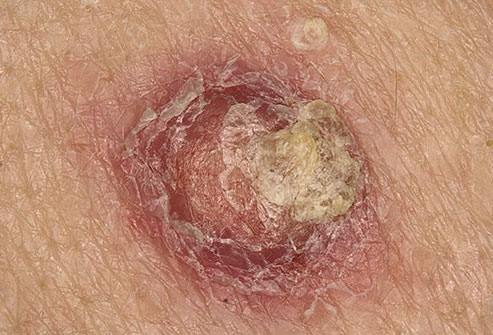Squamous Cell Cancer is the second most common skin cancer and it is one of the most common conditions that I diagnose and treat in my The Woodlands dermatology and Conroe dermatology offices. Squamous Cell Cancer is similar to Basal Cell Cancer as it arises from the epidermis, specifically the keratinocytes. UV radiation is the most common cause of Squamous Cell Cancer, so areas such as the face, ears, arms and hands are very common sites to find this cancer. However, other factors strongly influence the development of Squamous Cell Cancer such as scarring conditions like burns, discoid lupus, hidradenitis suppurativa, chronic ulcers, dystrophic epidermolysis bullosa, and erosive lichen planus. The HPV virus is notorious for inducing Squamous Cell Cancer in the anogenital area. Epidermodysplasia Verruciformis (EDV) is a genetically prone HPV condition that has a high risk of developing Squamous Cell Cancer. Immunosuppression with HIV or patients on immunosuppressive drugs to prevent rejection of a transplanted organ are also at high risk for the development of Squamous Cell Cancer. In darker skin patients, Squamous Cell Cancers are 20% more common than Basal Cell Cancers. In sun-exposed areas, Squamous Cell Cancer typically arises from actinic keratoses (see Blog category Actinic Keratosis). The typical appearance of a Squamous Cell Cancer is as scaly, crusty nodule or ulcer that gradually enlarges with time. Cutaneous Squamous Cell Cancers behave similar to Basal Cell Cancers when diagnosed and treated at an early stage they have an excellent prognosis, but they do have a higher tendency to metastasize. The treatment of Squamous Cell Cancers is almost always surgical although other treatment modalities are occasionally employed.





